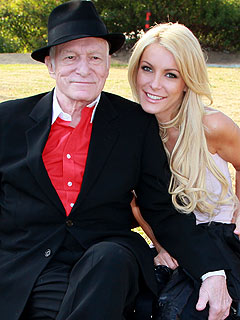By Suzy Hansen
More than 10,000 customers, partners and attendees flocked to the Hewlett-Packard Discover conference in Frankfurt, Germany, this week to learn about HP’s latest products, exchange ideas, swap business cards and basically examine whether HP can improve the way their companies are run. The event was held at Messe Frankfurt, one of the world’s largest trade exhibition sites.
CEO Meg Whitman acknowledged in her speech on Tuesday that HP has gone through some rough times this past year. HP’s stock price has been nearly halved during her tenure. Whitman, however, pointed out that HP has $ 120 billion in revenue and is the 10th-largest company in the United States. In Q4, HP has generated $ 4.1 billion in cash flow.
“We are the No. 1 or No. 2 provider in almost every market,” Whitman told the crowd in Frankfurt.
Whitman emphasized executives’ increasing concerns about security and said that it will be addressed by “a new approach”: HP’s security portfolio, with Autonomy and Vertica, which helps “analyze and understand the context of these events.” Executive Vice President of Enterprise Dave Donatelli spoke about converged infrastructure, or bringing together server, network and storage; their software-defined data centers; and their new servers, which “change the way servers have been defined.” George Kadifa, executive vice president of software, said 94 of the top 100 companies use HP software. HP is the sixth-largest software company in the world, with 16,000 employees in 70 countries, Kadifa added.
Also at the conference was Jeffrey Katzenberg, CEO of DreamWorks and an old friend of Whitman’s from their Disney days, who roused the crowd with a fun speech about his long relationship with HP. Katzenberg showed an old video of himself onstage with a lion, which nearly mauled him. This time, he appeared onstage with a guy in a lion suit. The lesson was to learn from past mistakes and move on.
“If I am smart enough to say ‘scalable multicorps processing,’ I am smart enough to not put myself onstage with a real lion again,” he joked.
The Discover conference is a key vehicle for HP to show off products it’s offering in the coming year. Among them were the latest ProLiant and Integrity servers, the 3PAR StoreServ 7000 and the StoreAll and StoreOnce storage systems. At the HP Labs section of the conference, attendees could learn about the cloud infrastructure or test HP’s new ElitePad 900.
Throughout the three-day event, which saw attendance grow by 30 percent this year, attendees wandered the enormous halls, milling around displays, watching videos, listening to speeches and participating in workshops. People gathered on clustered couches and chatted with new acquaintances, frequently stopping to plug in their various devices and recharge themselves with coffee. With people coming from all over the world, you could hear many languages spoken, from Arabic to French to the most bewildering of them all: the language of technology. Despite the large crowds, it was hard not to notice there were very few women among the thousands in attendance. In fact, when asked about this phenomenon, one female HP employee said, “Trust me, you aren’t the first person who has come up to me asking about this.”
Indeed, the Discover conference was like a forest of men in suits. The few women stood out like rays of sunlight.
Regardless of their presence at this conference, women are making big strides in information technology. Among the leaders are HP CEO Whitman, who also led eBay; Carly Fiorina, who ran HP before Whitman; Yahoo! CEO Marissa Mayer; and Facebook COO Sheryl Sandberg. Were the women at the Discover conference surprised by the low female turnout?
“No, for IT this is standard,” said Stefanie, a 30-year-old product manager from Germany. “Many are afraid of all the technical stuff, and you have to prove that you are capable of it. You get more women in retail and distribution but not in high-tech areas, at least not in Europe. In America there are more women in management positions and in general.”
Americans might assume that Europe, with its generous social programs that include free daycare, enables more women to ascend the corporate ladder. But that still doesn’t mean that a woman trying to balance a high-tech career and a family is always accepted in European society.
“There is still a lot of emphasis on the family,” Stefanie said. “It’s easier to move up in the U.S., where there is a culture of ‘having it all.’ It’s quite a fight to get there here.”
Still, the IT industry might seem inhospitable to women. Could this male-dominated profession be male-dominant because women have a hard time breaking in?
Stefanie disagreed. “No, they actually like working with women,” she said. “They want to.”
One male conference attendee, who asked not to be named, was less certain.
“There’s a lot of ego and testosterone,” he said. “It can’t be easy” for women.
Tech News Headlines – Yahoo! News











